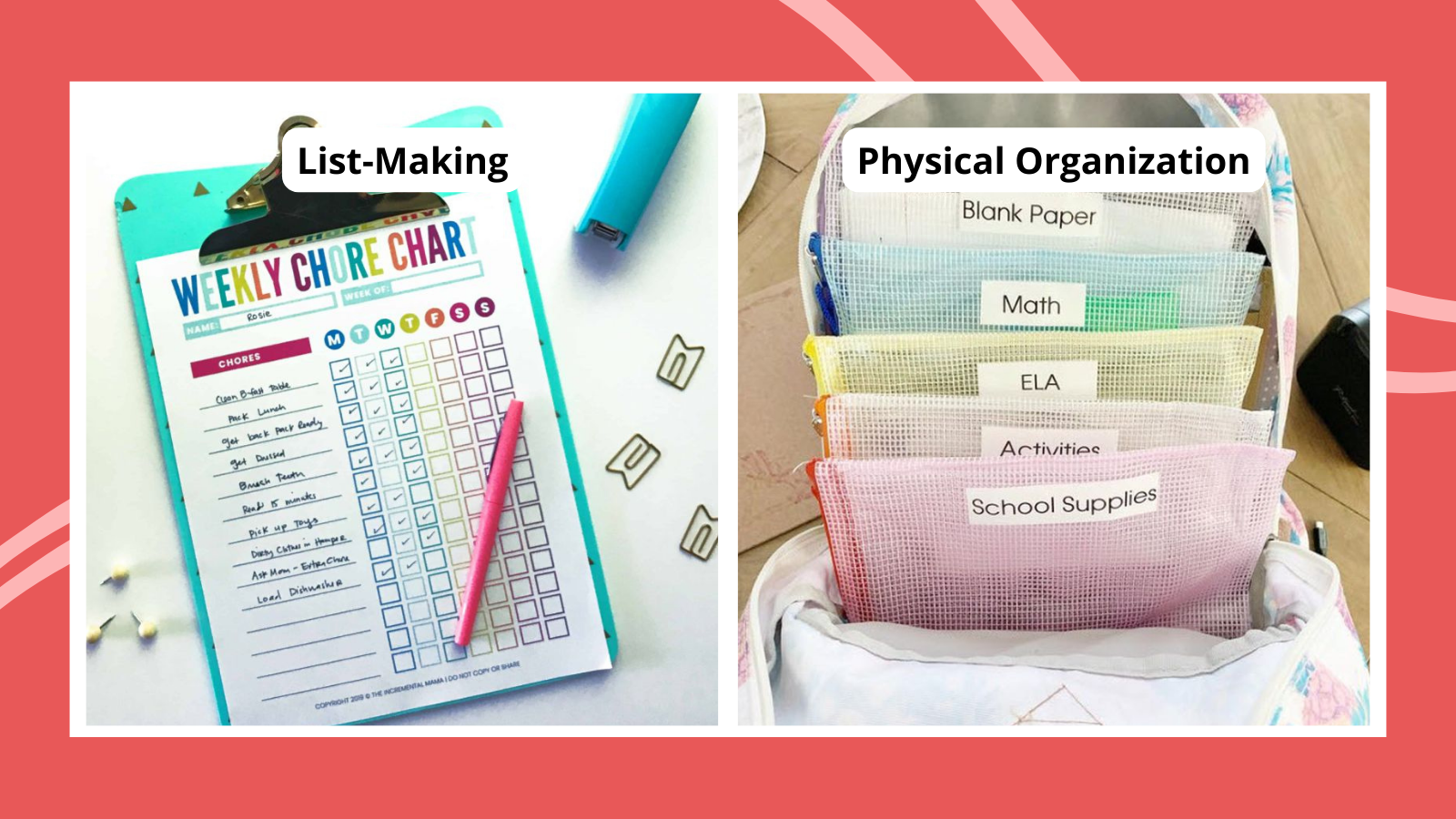For some people, staying organized comes naturally. But most of us have to develop these skills over time, learning the most effective methods to keep ourselves on top of it all. That’s why it’s so important to help kids and teens learn and practice good organizational skills. When teachers and parents explain, demonstrate, and model organizational techniques, students get a good grounding in these valuable behaviors. Here are 15 skills everyone should learn, plus effective ways to teach and practice them.
1. Time Management
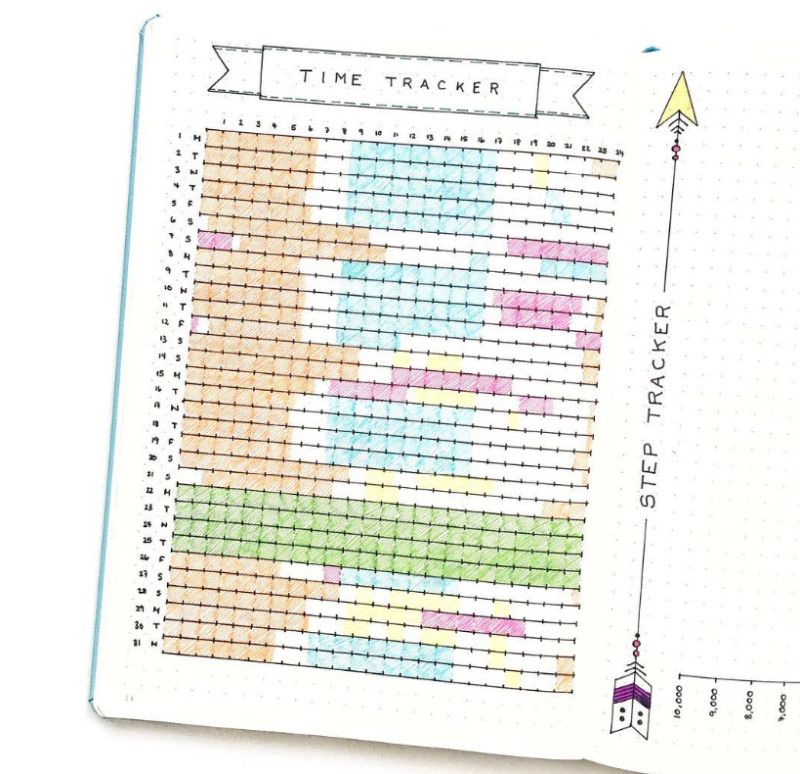
This is a key organizational-skills topic for kids, who often have very busy schedules. By their middle school years, kids should be learning to think ahead about how much time they’ll need to complete all their tasks. They’ll also need to learn how to help themselves stay on task, which is a big part of time management.
How to teach time management: Start by showing kids how to track the time they spend on various activities (get a terrific list of time tracker worksheets at Develop Good Habits). Help them identify blocks of time that could be better spent, and talk about ways to help them stay focused on the task at hand.
2. List-Making
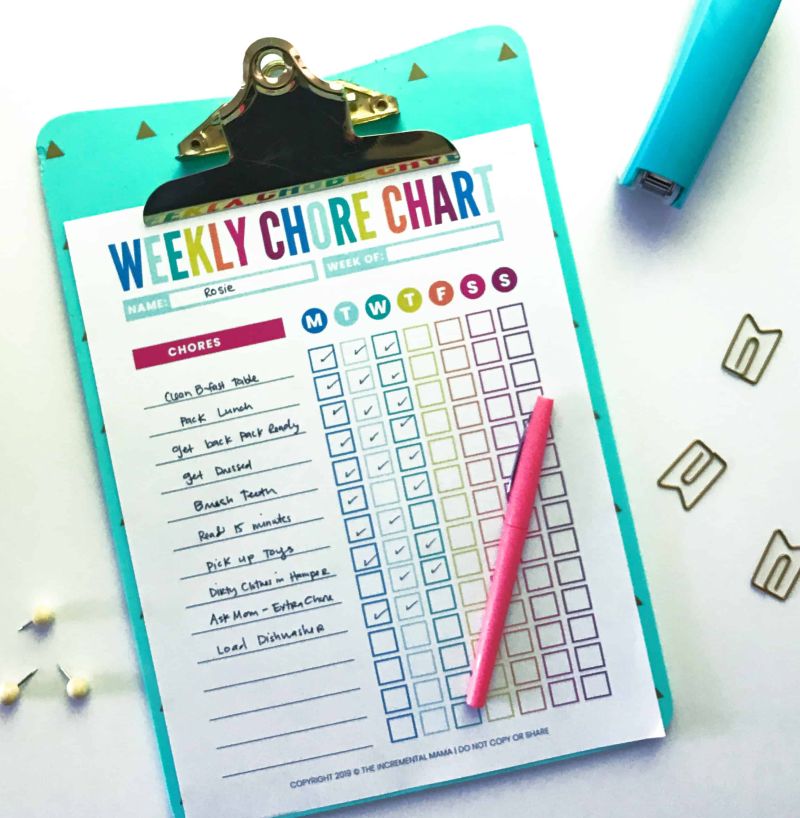
Ah, the magic of the checklist! Who doesn’t feel a sense of satisfaction at crossing an item off their to-do list? To be effective, though, lists must be specific and easily accessible. (There’s no point in making lists if you’re just going to lose them!) Teach kids how to break tasks down into manageable line items, and use those items to create a checklist. Whether they keep a paper list or use an online to-do list app, ensure they check it regularly to help them remember what comes next.
How to teach list-making: For many kids, their first checklist is a chore chart like this free printable from The Incremental Mama. From there, students can move on to making lists for school projects, breaking each one into detailed tasks. For instance, they shouldn’t just write “Make diorama.” Their list should include items like “Choose topic,” “Sketch a plan,” “Find materials,” “Cut out figures,” etc.
3. Prioritizing

This is possibly one of the most important organizational skills of all. When you have a big list of things you need to do (and want to do), you have to know how to prioritize some things before others. Once you’ve done that, you’ll know which items you need to tackle first, and which can wait awhile (or even be deleted).
How to teach prioritizing: Start by helping kids break down their tasks into three categories: Urgent, Important, and It Can Wait. (Buy a printable worksheet from Mylemarks, or make your own.) Older students might want to try the Eisenhower Matrix, which classifies items into four categories by urgency and importance.
4. Scheduling

Sooner or later, we all find ourselves wishing we had a few more hours in the day to get stuff done. Sadly, you can’t give kids longer days, but you can help them learn to create schedules that fit into the time they do have. To be an effective scheduler, you need to have an accurate idea of how much time something takes, as well as knowing which items to prioritize. Scheduling tools should be easy to update, and always close at hand.
How to teach scheduling: Help students create a scheduling system that works for them by taking a look at our list of the best academic planners for students. It includes both paper options and online apps. Whichever they choose, make sure their schedule leaves a little wiggle room for the inevitable stuff that pops up from time to time and throws everything off course!
5. Creating Routines
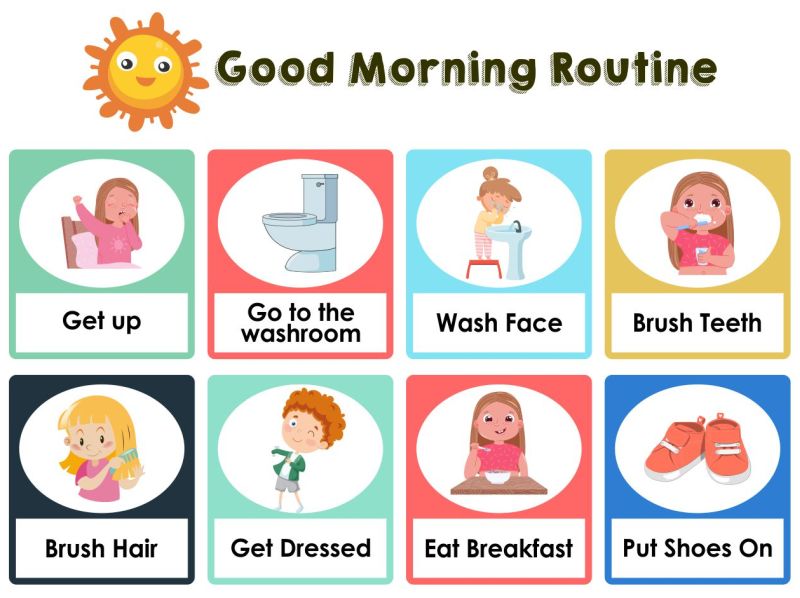
Routines can be one of the easiest ways to help busy kids stay on track. If you do the same things each day at the same time in the same way, you’re less likely to forget them. For instance, teach young kids to get up, make their bed, brush their teeth, comb their hair, get dressed, eat breakfast, and so on. An after-school routine might be: Hang up coat, unpack backpack, grab a snack, spend 30 minutes unwinding, tackle homework, set the table for dinner, etc. Once these routines become automatic, kids (and parents!) will find their lives are a lot easier.
How to teach routines: Teachers, use these 31 Must-Teach Classroom Routines to keep students organized at school. At home, parents can create checklists to help kids establish a new routine. After awhile, you’ll likely be able to do away with the list because the routine will now be a habit.
6. Goal-Setting
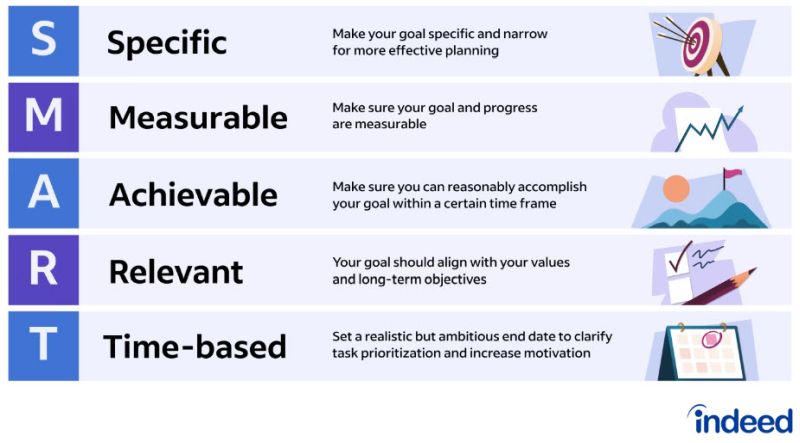
In addition to all the things we have to do, life is filled with things we want to achieve. That’s where setting goals comes into play. It’s one thing to think yourself: “I want to make the basketball team.” It’s another to actually set a series of smaller goals to help yourself achieve that dream. SMART goals have been popular for years because they really work. Each goal should be Specific, Measurable, Achievable, Relevant, and Time-Based. Learn more about SMART goals from Purdue Global.
How to teach goal-setting: Coach students to dream big, then make the plans they need to reach those goals. Start by using our free goal-setting worksheet that guides kids as they identify their overall goals. Then, follow our guide to helping students set goals in ways that truly make them achievable.
7. Project Planning

When you give students long-term projects to complete, there’s real value in also helping them plan out how they’ll complete those projects. Show them how to break a project into smaller parts, then estimate the time needed for each part and create a schedule. Help them identify the resources the project requires, and consider any obstacles they might need to overcome. Don’t forget to have them set regular reminders to ensure they’re staying on track along the way.
How to teach project planning: Printable project planners are a terrific tool for students. For elementary kids, provide a planner like this one from Scattered Squirrel, and help them complete it before starting the project. For middle school kids, provide the planner as a tool they can use on their own. Point high school students in the direction of useful planning tools, and encourage their use.
8. Collaboration
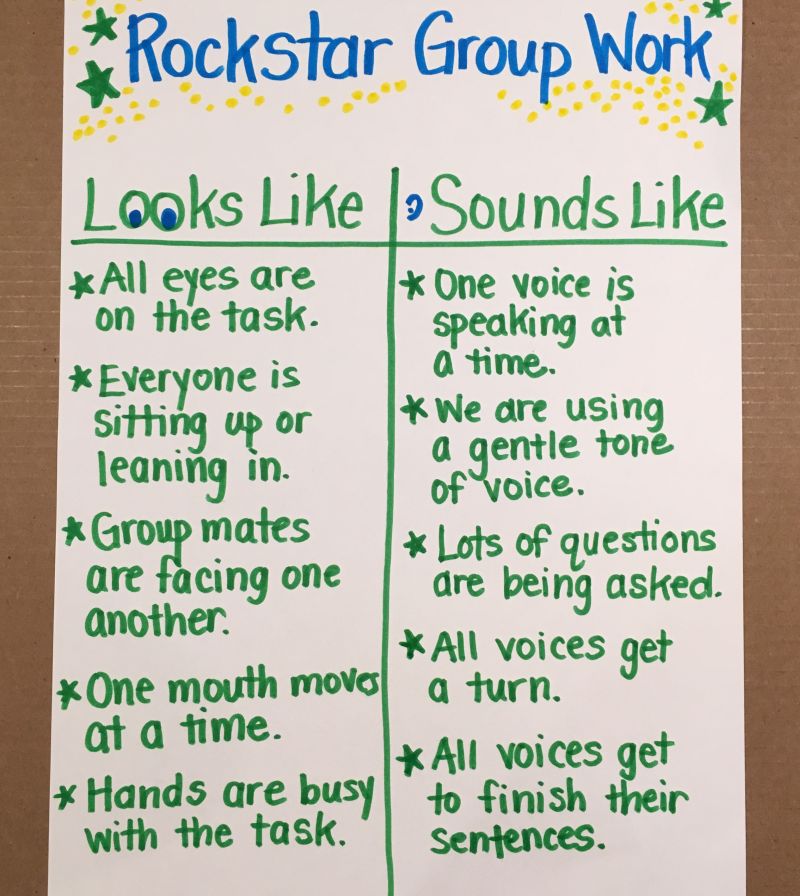
School projects often also require collaboration, which actually involves a lot of organizational skills. In addition to working together to make a project plan, students need to learn to delegate responsibilities and communicate effectively. Each member of a team must organize their own tasks, plus communicate their achievements and needs with other team members.
How to teach collaboration: The more often kids are given opportunities to work together, the stronger their collaboration skills will become. Try these 5 Tips for Successful Group Work in the Classroom, and be sure to look into our favorite tools for online collaboration here. Then, give them a chance to practice with 40+ Best Team-Building Games and Activities!
9. Preparation

Once you have a plan in place, you’re ready to tackle the task. First, though, you have to prepare any materials or resources you might need. This could be laying out the ingredients you need to bake cupcakes, gathering all the resource materials for a research project in one place, or laying out the clothes you’ll wear to school the next day. Preparation is a step people often skip, but taking time to prep in advance is an important method for keeping yourself organized.
How to teach preparation: Chefs know the importance of mise en place, a French term that means gathering and measuring out all your ingredients before you begin. Teach students about this concept using lesson plans from Twins and Teaching. Then, ask them how they can apply mise en place to other projects and activities in their lives.
10. Physical Organization
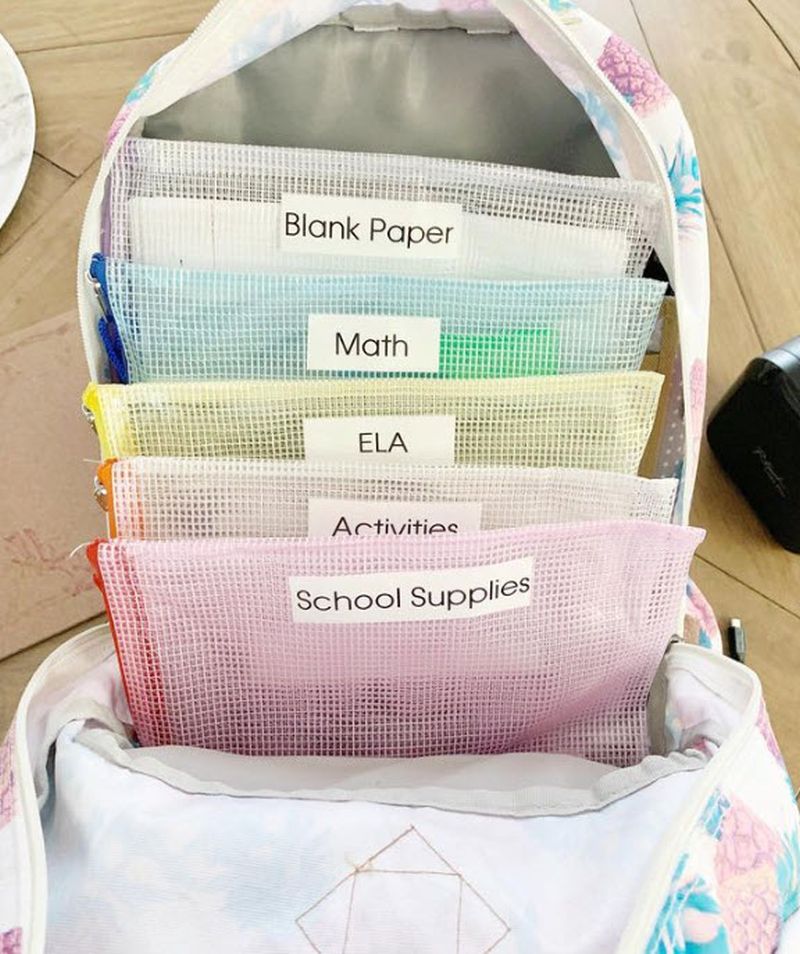
Keeping all our stuff organized is so challenging that we have entire stores dedicated to the concept. (Love you, Container Store!) But just investing in all the cute and clever storage bins and organizational systems isn’t enough. You’ve got to teach kids to use them, every single day. Routines can be helpful here (see above), as can creating clear labels and dedicated space for particular items.
How to teach physical organization: In the classroom, model good organizational skills using these 30+ Brilliant Classroom Organization Ideas for Teachers. In elementary school, you can also try some of these innovative ways to organize take-home folders. At home, try setting aside 10 minutes at the end of every day for kids to put away toys, games, and clothes, then get their backpack in order for the next day. Learn how to organize your backpack in nine steps from wikiHow.
11. Digital Organization
In today’s world, we have nearly as many things to organize online as we do in the real world. Files, apps, photos, emails, messages, passwords … the list goes on and on. Digital organization is a need that didn’t even exist a generation ago, so there are plenty of adults who struggle with it too. But students need to learn how to manage digital files, passwords, and other information effectively.
How to teach digital organization: Show students how to name files usefully so they can find them later. Older kids can benefit from learning to find and use safe password management software. Teach students how to create folders and sub-folders to store all their files and emails. One popular strategy is the PARA method—check it out at Forte Labs.
12. Note-Taking Strategies
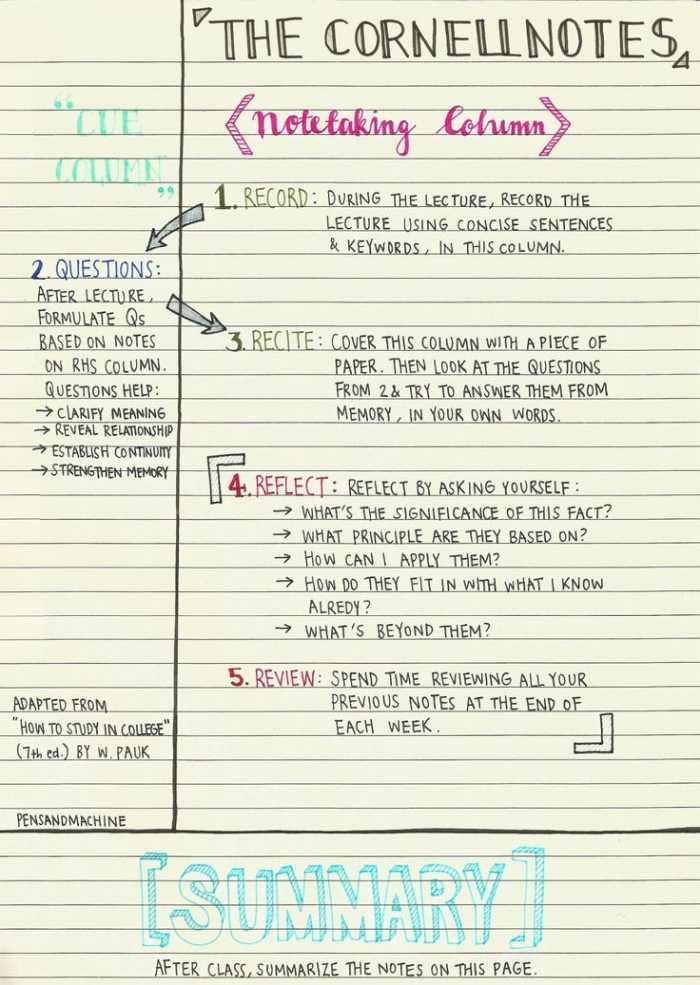
Taking notes isn’t as simple as just writing down what the teacher says. There’s a real art to it, and knowing how to do it well can be the difference between passing a class with ease or struggling your way through. Fortunately, there are a variety of proven note-taking methods out there, so all kids can figure out the strategies they like best.
How to teach note-taking strategies: Our complete guide details seven top note-taking strategies, including the Cornell Method, Boxing Method, Mapping Method, and more. Share these with students so they can find the ones that work best for themselves.
13. Financial Planning
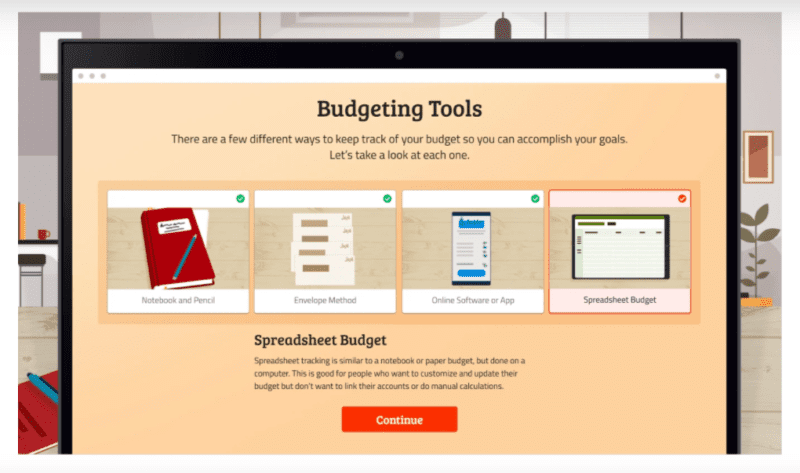
Keeping finances in order is one of the best organizational skills we can teach kids. They’re never too young to start, either. At home, parents can show kids how to budget their allowance using the spend, share, and save method. In the classroom, today’s teachers have access to a huge array of financial literacy lessons and units.
How to teach financial planning: Need financial-planning ideas for your curriculum? Try these 30+ Financial Literacy Lesson Plans for Every Grade Level.
14. Test-Taking Strategies
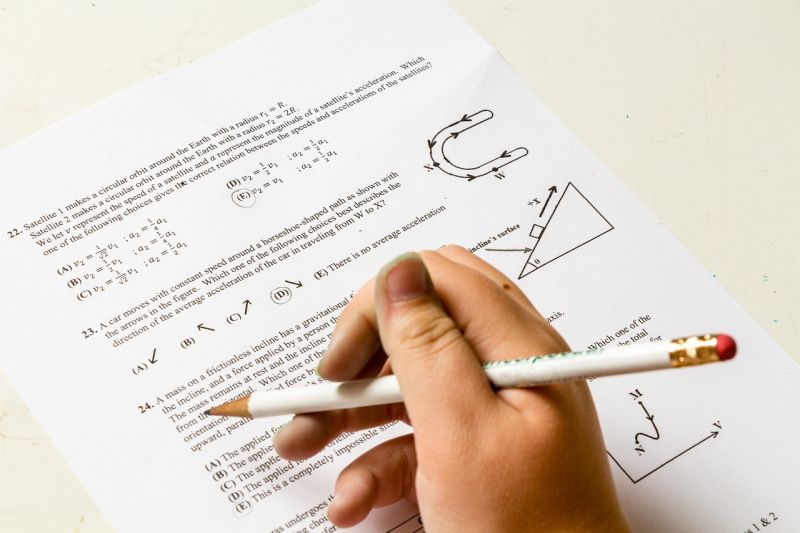
Acing a test requires a complex set of organizational skills, from studying and test prep to the order you tackle the questions themselves in. Some students suffer from severe test anxiety, which keeps them from being able to truly demonstrate what they know. Learning the best way to organize in advance and prepare for a test can make a real difference.
How to teach test-taking strategies: Check out our complete guide to test-taking strategies for students here. Help kids learn to conquer anxiety by preparing well in advance, taking their time on test day, and more.
15. Personal Assessment
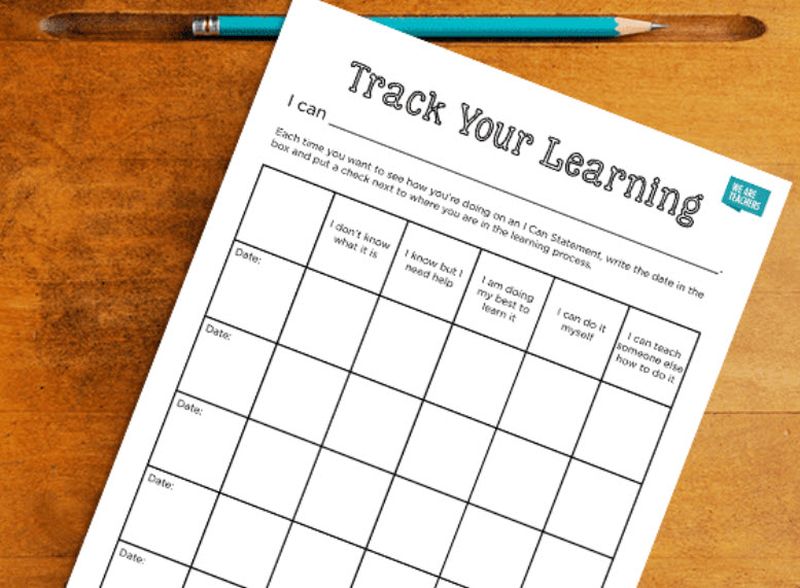
Every so often, it’s important to set aside time to establish exactly where you are in terms of your goals and tasks. This could be as simple as sitting down at the end of the day to review and check off items on your to-do list. Or it might mean taking a broader look at your life in general to assess how much progress you’ve made toward personal goals. Either way, doing this regularly will help you organize your thinking as you prepare for the future.
How to teach personal assessment: Our free printable Track Your Learning worksheet can help elementary and middle school kids assess the progress they’ve made toward their goals. Encourage older students to regularly revisit the goals they’ve set for themselves and evaluate where things stand.
